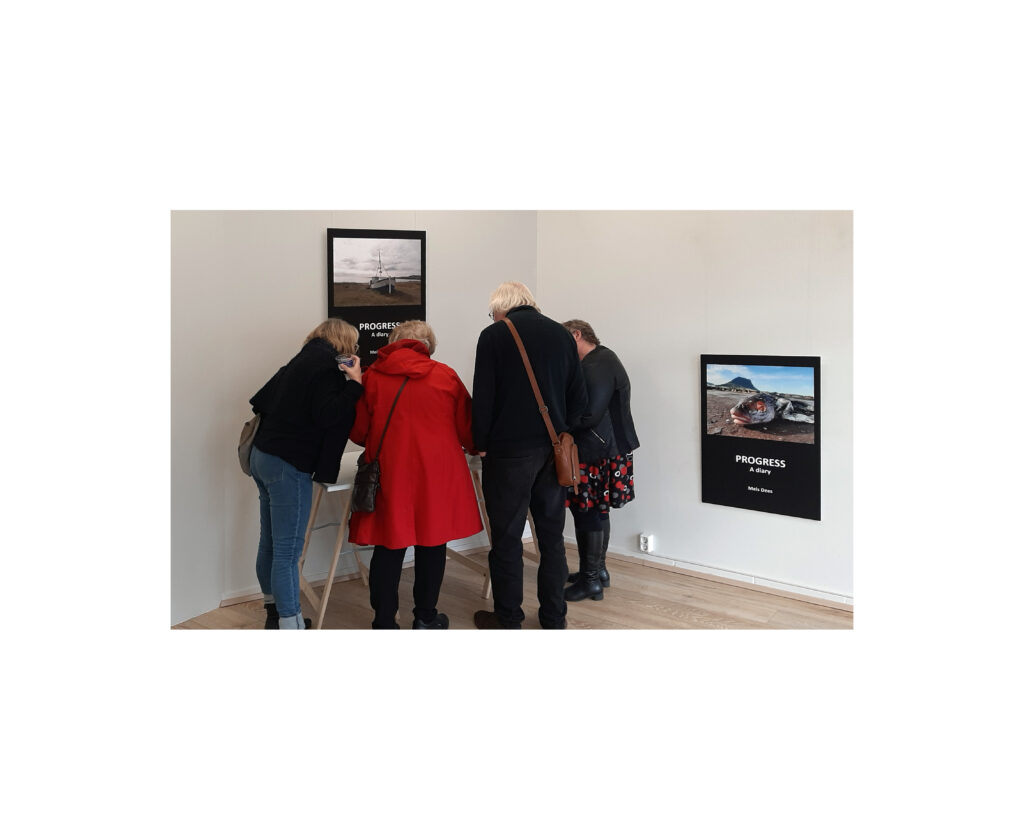Mels Dees, Januari 2023

In 2017, the year we started this site (www.mmblog.eu), Iceland had been on both our minds for years.
Mariëlle had Icelandic friends and acquaintances from her time at the Jan van Eyck Academy (NL), I had been attracted to the country as a spectacular habitat, had followed Sigurður Guðmundsson’swork from the early 70’s and had met Icelanders at EKWC. And we both had a residency at CEAC, Chinese European Art Centre in China, founded by Ineke Guðmundsson.
So it felt quite logical to apply for a residency at SÍM, an organisation that manages artists’ residencies in downtown Reykjavik, in Korpúlfsstaðir (just north of Reykjavik) and – surprisingly – in Berlin.
We got a place at Korpúlfsstaðir in 2017, at the end of the winter, and decided to go by car and ferry from Denmark (Hirtshals), via the Faroe Islands. It does take some time (about two days and nights), but it is great fun and it certainly makes you aware that you are far, far away from almost everywhere else. Our son Quirijn joined us on the boat trip, but had to fly back (to his music school in Holland) soon after our arrival in Reykjavik.



2017: Korpúlfsstaðir at night and our studios there

2017: Mariëlle and Svanborg Matthíasdóttir & Pálína Guðmundsdóttir, Joris Rademaker and Mels
The 2017 residency was a great success, with Mariëlle painting some impressive landscapes on paper and me experimenting with drone photography and bookbinding using local DIY materials. But – perhaps most of all – we enjoyed the company of our Icelandic colleagues. They were not only helpful, but also extraordinarily talented. We were amazed to see that they sometimes had to work one or two jobs (Iceland is a very expensive place) and were still able to make exquisite work.
So, when we were back in the Netherlands, we started to think about organising an exhibition by our Icelandic friends in Holland. We had good connections with the people at KEG – an artist-run venue in Schijndel, just north of Eindhoven, with a beautiful ‘white room’ exhibition space and very open-minded curators.
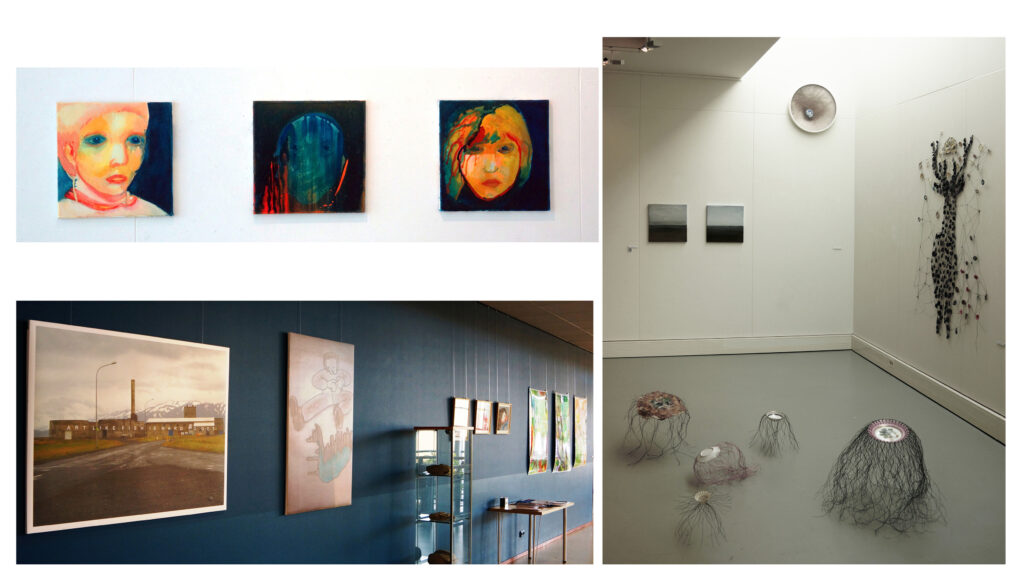
2018: Pictures from the exhibition Frá Íslandi at KEG, Schijndel
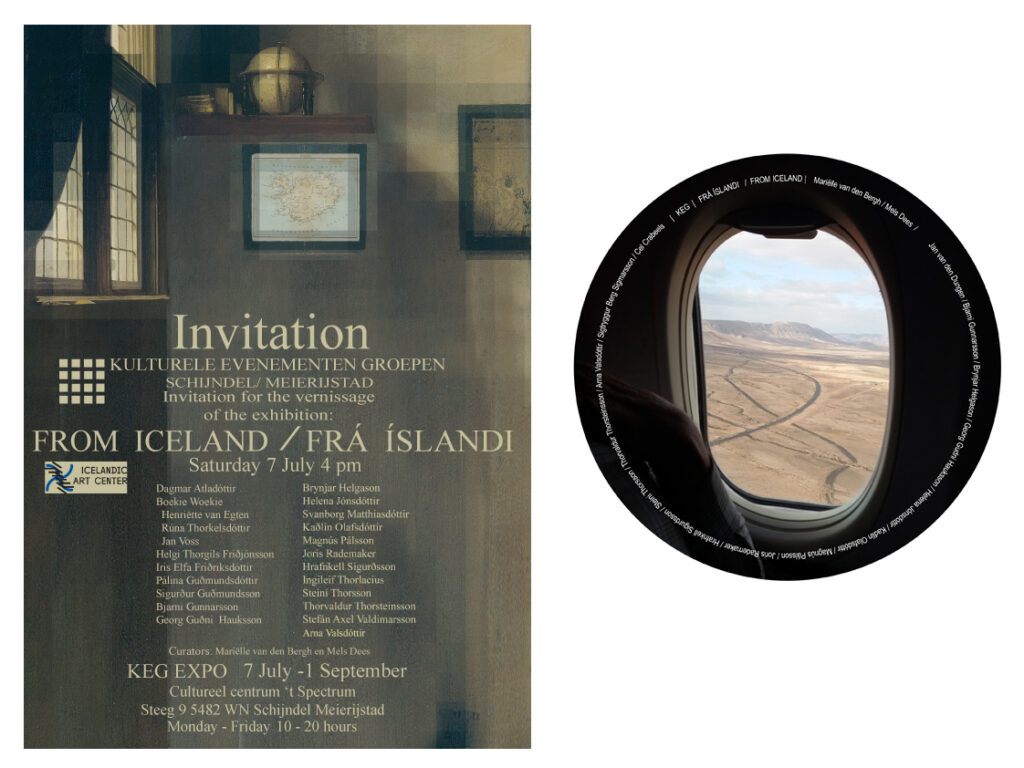
2018: Invitation and DVD print
Thanks to the people at KEG (Jan!), the exhibition Frá Íslandi (2018) boasted an impressive catalogue with DVD, beside featuring well-known Icelandic artists like Sigurður Guðmundsson, Georg Guðni Hauksson, Thorvaldur Thornsteinsson and Magnús Pálsson. At the opening, people came not only from Iceland, but also from Barcelona and Brussels. At times it seemed like an international Jan van Eyck and AKI reunion. Even some local papers took note of the event.
In the meantime, we still had not really seen Iceland. That is: when we were there, everything had been hidden by snow. The landscape was there, with lots of aurora borealis, but most of it was mostly covered with ‘white paint’.
Also, the weather (horrendous storms, literally blowing the tarmac off the road) made it pretty hard to wander around and see places.
For more about our 2017 residency click on the item (in small red lettering) at the end of this series of blogs. Scroll down to the bottom and select “IJSLAND -SIM”.

2017: Aurora in Korpúlfsstaðir
2022: Iceland Revisited – the Artak Residency
Travelling around, staying at Grundarfjördur and a show in Reykjavik
Mels Dees, Januari 2023
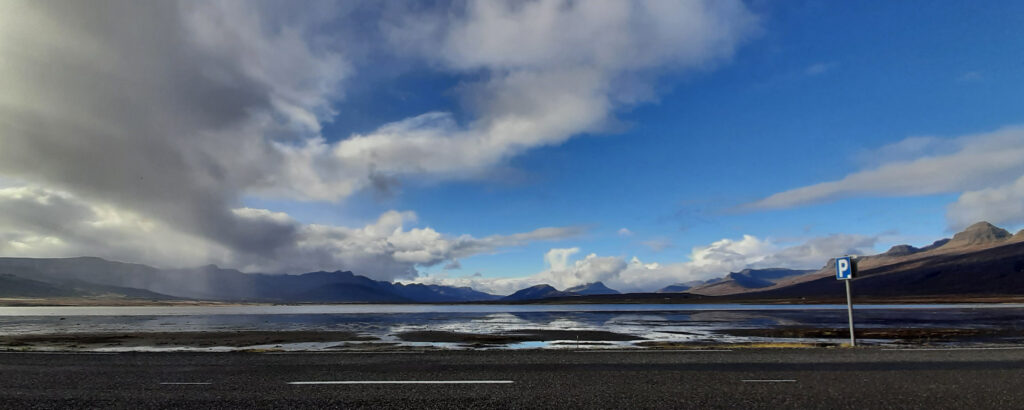
2023: Iceland – the incredibly scenic landscape
So yes, we wanted to go back. This time we also wanted to look for the wild places and stay away from Reykjavik and Akureyri a bit. And in May 2022, we discovered that a month’s residency (August) on the Snæfellsnes Peninsula on the West Coast had unexpectedly become available on www.artak.is. In 2017 we had already visited the area. So we applied for all we were worth and we got in.
The plan was to drive slowly through Germany and Denmark, visit old and new friends, views and museums, take the ferry from Hirtshals to Iceland and continue in the same leisurely way to the ARTAK Residency at Grundarfjörður.

The Clay Keramikmuseum
And that’s what we did – even after Mariëlle went down with a mild bout of Covid just before we left.
On the road, we found sunny beaches, old towns and new museums. We visited an old Icelandic friend (Iris Friðriksdóttir) in Sønderborg (Denmark), who was teaching there at an incredibly advanced and well-equipped public art school. We also stopped by the International Ceramic Research Centre Guldagergaard, an artists’ residency in Skælskor, where we had worked several times and where we met again with a Turkish ceramist friend, Gizem Altundal, while she was connecting to the European way of creating art and ceramics.
We visited the Clay Keramikmuseum in Middelfart, Denmark and of course one of our favorites: the AROS art museum in Århus. All in all, this was turning into such an interesting trip, that I decided to make my photographic and written diary into the source of my ARTAK project.
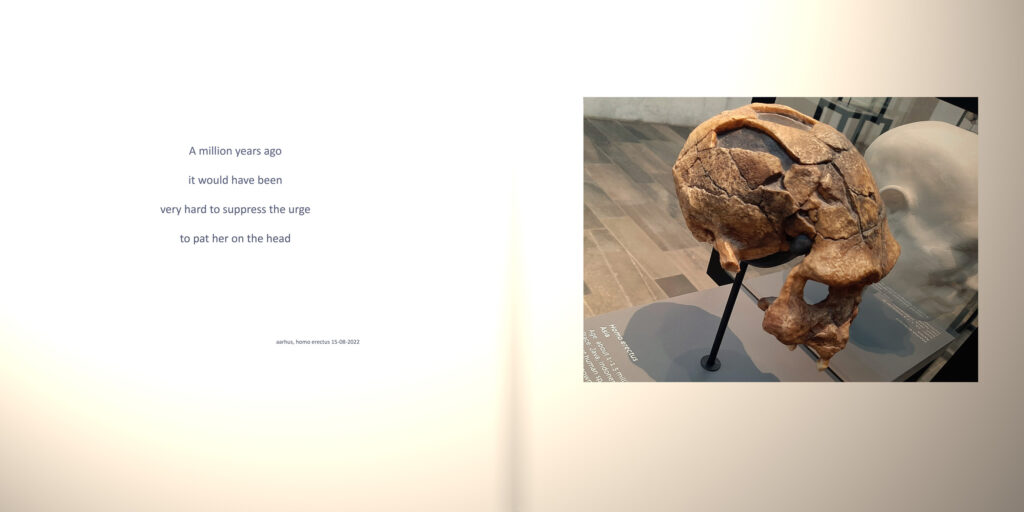
Two pages from the diary
Similarly, just before we went to Iceland, Mariëlle had read about the fact that Dutch farmers had to pay to have the wool from their sheep destroyed. Nobody wants it anymore – people in the West prefer cheap synthetic textile products made in low-wage countries. Mariëlle was shocked, of course. Not only because she was trained as a textile artist, but because a valuable raw material is senselessly wasted. So she dumped her plan to paint the Icelandic landscape, and decided to focus on wool, using Icelandic wool in natural colours and dyed with natural products, like lichen, berries, leaves, bark and roots.
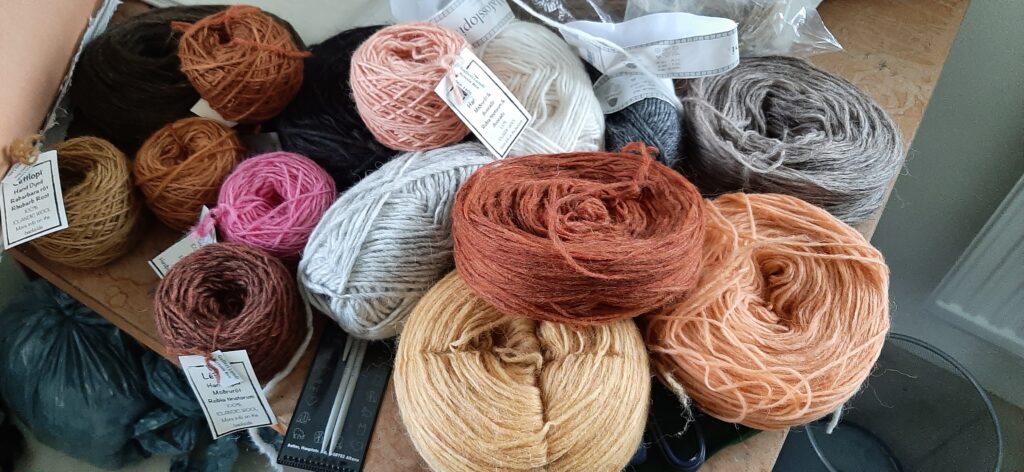
In Iceland, wool still is a valued product
Still, our goal remained Iceland itself. For any artist interested in the interaction between Man and Nature, Iceland can be a laboratory, a school, a playground or a home. For us, it was all of that.
There is no way around the country’s impressive natural beauty and the imposing conditions of its weather, mountains and seascapes. However, if you restrict yourself to recording those, you risk ending with visual platitudes and semi-touristic imagery. The solution is not to jump to conclusions and keep your eyes open.

Mels + Ferry @ Seyðisfjörður
Travelling by boat from Europe, you arrive at Seyðisfjörður on the east coast. In wintertime, it is a rather forbidding place (see above) – but now we travelled effortlessly to the south, where we visited the Red Snowball show in Djúpivogur and saw Sigurður Guðmundsson’s wonderful work Eggin í GleðivÍk, the Eggs at Merry Bay, a row of huge sea fowl eggs in polished stone, fringeing the harbour.
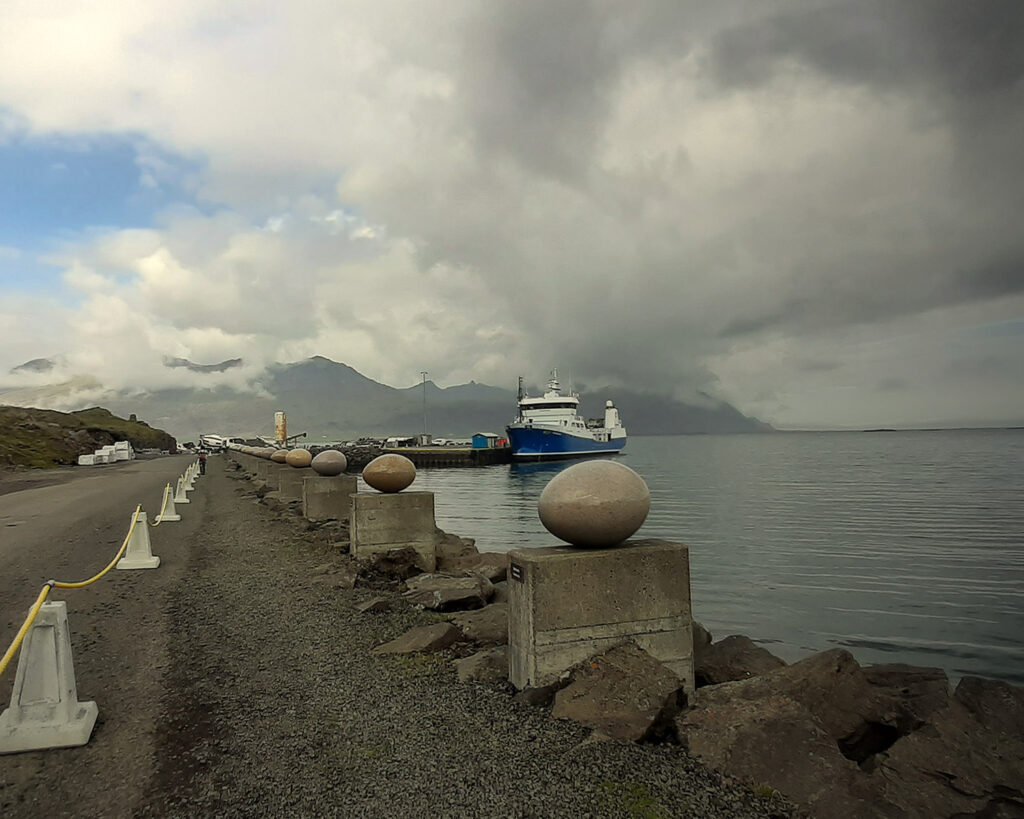
Sigurður Guðmundsson’s eggs along the Djúpivogur harbour
After that we spent a few days visiting some of the famous sites of Iceland, like the Dettifoss falls, Mývatn lake and the geological formations around it. We were surprised how crowded they were – over the past few years, tourists have truly discovered Iceland and it was obvious that there were a lot of fugitives from overheated countries in the South of Europe.
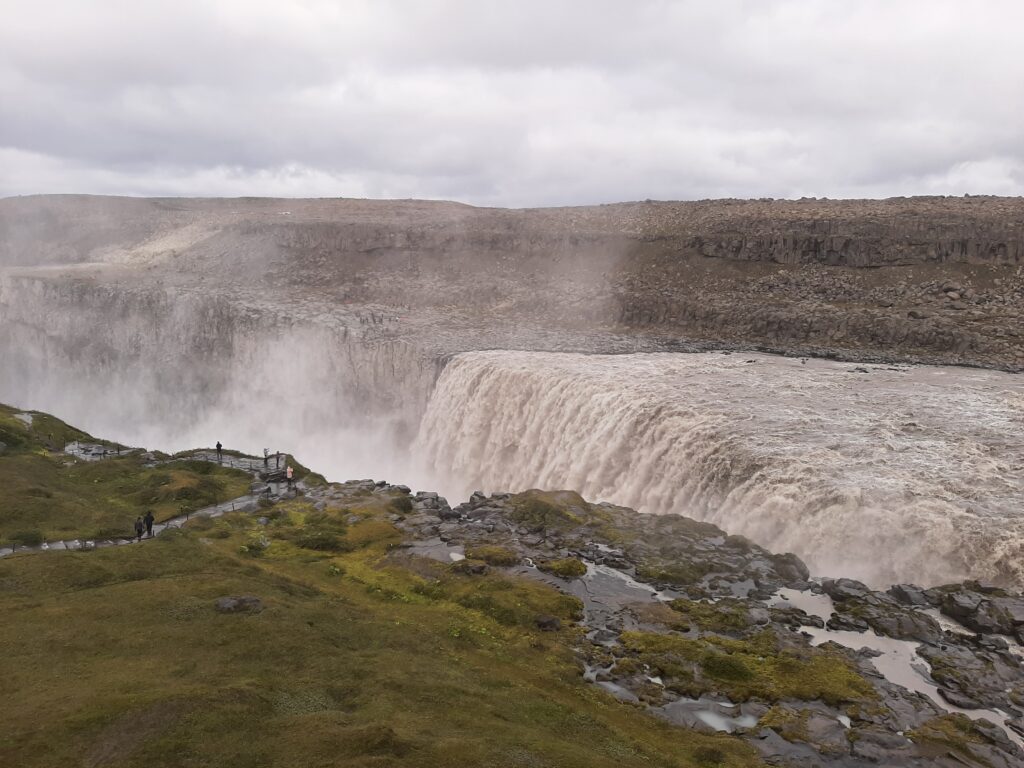
Dettifoss falls (mark the size of the viewers)
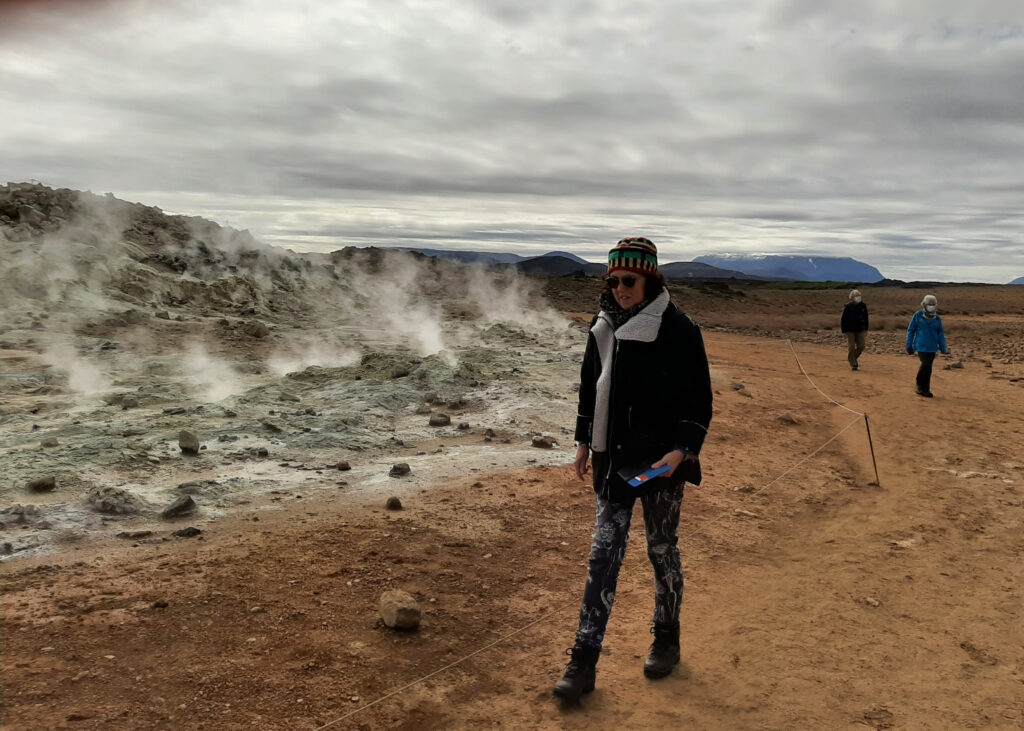
Mariëlle, Mývatn Geothermal Area
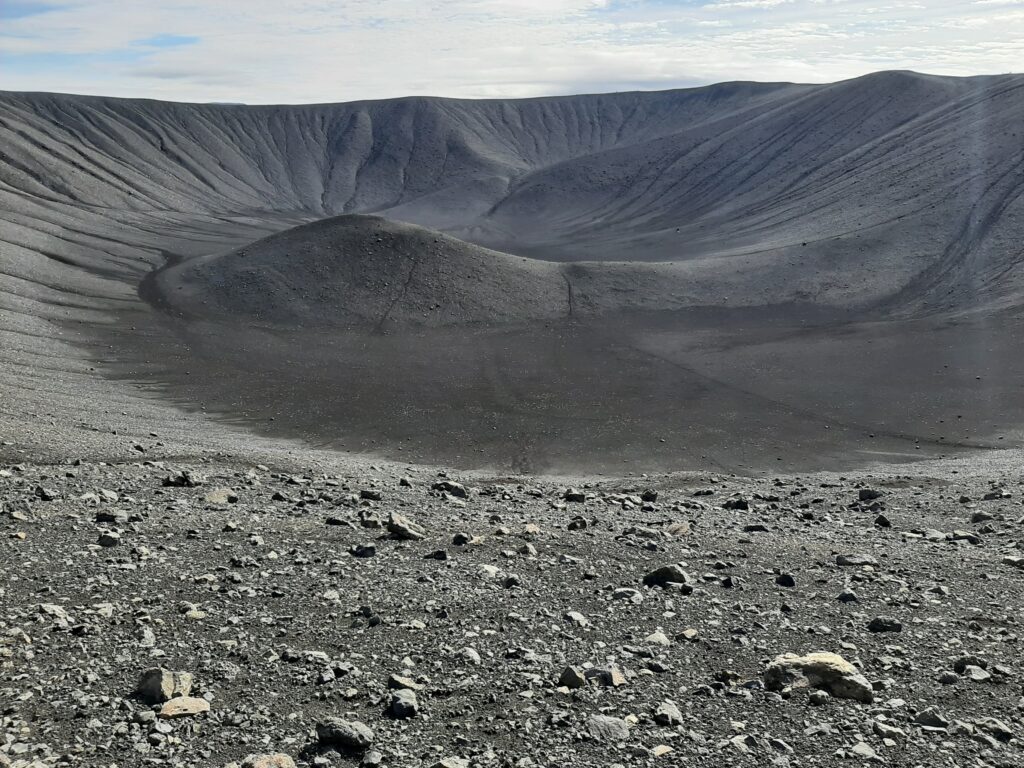
One of the enormous (pseudo) craters around Lake Mývatn
After that we turned north towards Akureyri, where we met with Arna Valsdóttir, Steini Thorsson, Pálína Guðmundsdóttir and Joris Rademaker. And again we were lucky, because the lovely Akureyri Art Museum’s studio for visiting artists was momentarily unused and we could stay there for a few days – pure luxury. I fished a bit in the harbour, and we visited Steini Thorsson’s ‘Einkasafnið’, his hermitage in the nearby mountains. We had been told about it before in Holland and we were impressed by its rigorous simplicity and honesty. See it on his Facebook page (https://m.facebook.com/steini.thorsson/events/)
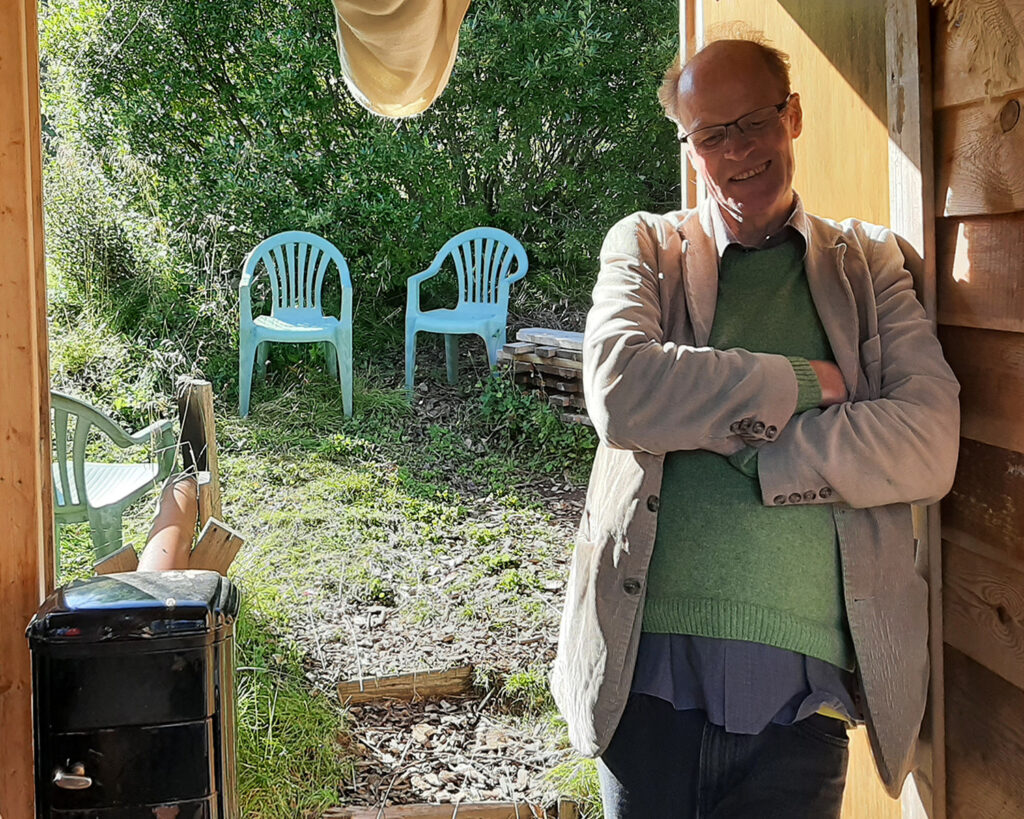
Steini in his retreat
From Akureyri we took the northern route to Arnarstapi, on the Snæfellsnes Peninsula. It is an old fishing village. Svanborg Matthíasdóttir’s family bought a cottage there, which they have been restoring for years, if not decades. We were invited to stay in the house, which was in a pleasant state of disarray. Mariëlle and Svanborg spent some days painting and drawing and we explored the mountains and the wild Snæfellsnes coast.

Svanborg and Mariëlle doing some plein-air painting
On the first of August we drove to Grundarfjördur and found the ARTAK apartment, close to the harbour. Neither the town, nor the building was very romantic – a fishing port in our time is an industrial site like another, smelling of gasoline rather than fish. Actually, it is hard even to see fish in Grundarfjördur: the catch is cleaned, processed, packed and frozen on board of the ship, and from the harbour it is whisked away to other destinations in giant trucks. But the scenery around it was something else, including a few impressive Fosses (waterfalls) and Kirkjufell, a quaint, famous mountain.

Liston in his studio in Grundarfjördur harbour
As you may expect in out-of-the-way places like Grundarfjördur, you meet unexpected characters there. One of them was Liston, a sympathetic, bearded fellow-artist who creates an extensive array of sculptures in wood, volcanic rock and other materials. He has his studio/gallery in one of the huge buildings in the harbour area. He was very sympathetic and helpful, and his works were quite expressive of Snaefellsnes and Iceland.
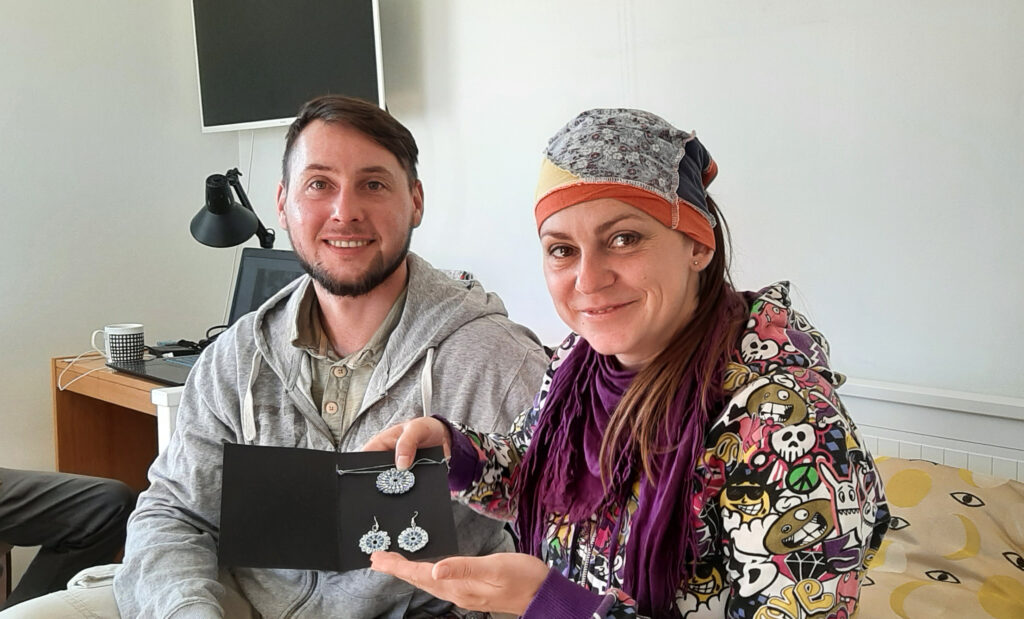
Helen and Mykola with a present made by compatriota Olga in the Netherlands
And then, surprisingly, there were a couple of Ukrainian artists in the village! Helen Shepytska and Mykola Kravets from @dyvyna décor events had been introduced by Thora Karlsdóttir, the initiator of the ARTAK residency. Thora had met them in Turkey, just after the invasion of Ukraine. She helped them to get to Iceland, and to get support from the municipality of the village. They were quite used to live and work abroad, as they specialized in creating environments and decors for events and celebrations. We invited them for dinner, and were impressed by their resourcefulness and tough artistic attitude.
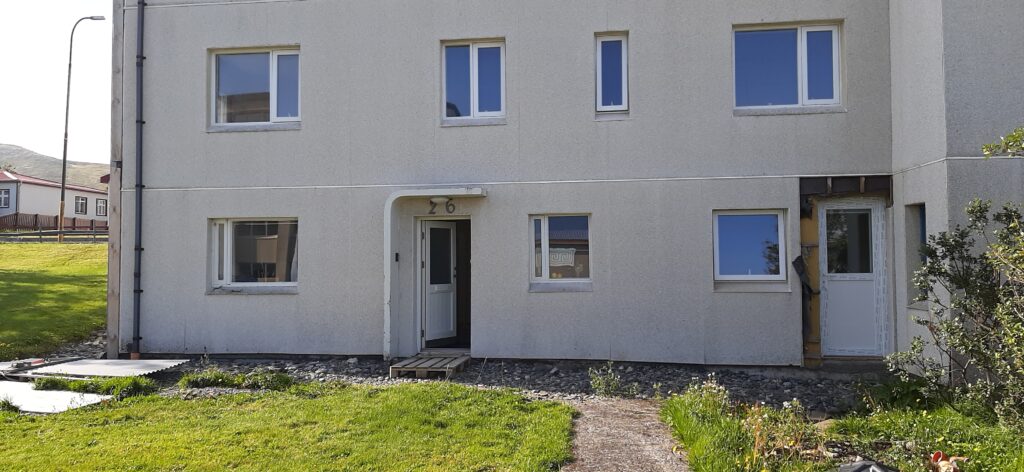
The ARTAK studio in Grundarfjördur
We worked at the comfortable studio in Grundarfjördur for about two weeks, Mariëlle experimenting with different kinds and colours of wool, some of which she bought from a sheep owner and knitter in Stykkishólmur, a fishing town further down the coast. She has 9 sheep, and the wool was packed in small bags with the producer’s name on it. We got a lively report on their characteristics and temperament as well. Mariëlle used the wool to felt over the rough shapes of volcanic stones, sometimes in the middle of the wild nature around us. I worked on the book I had planned – Progress was to be the (ironic) title. Sometimes I started from a short text I wrote, at other times I used pictures I had taken as a starting point.
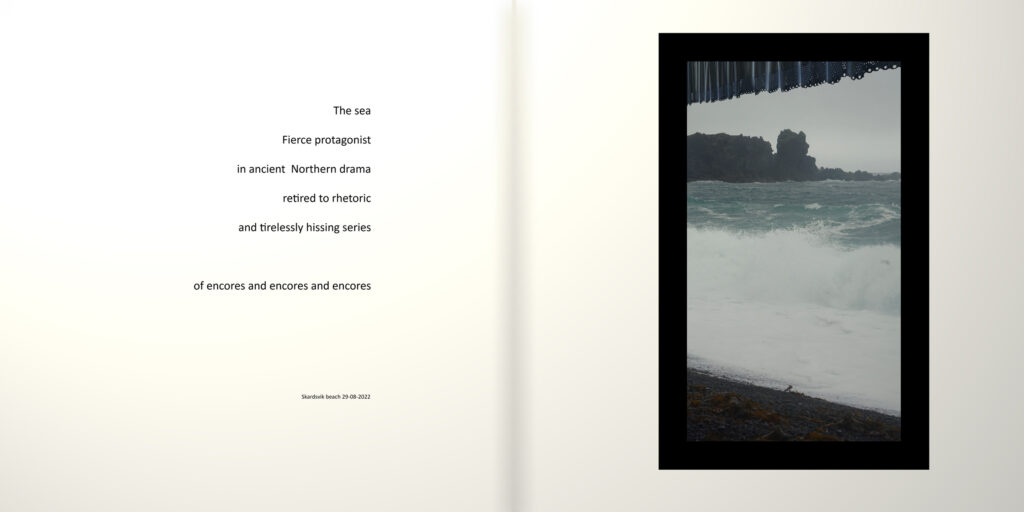
Another spread from Progress
After that, we drove to Keflavik Airport, south of Reykjavik – a car is almost a must in Iceland: the Ukrainians often slept in it to avoid expensive hotels. At the airport we picked up our son Quirijn, who accompanied us on residencies since he was a baby. He came on a short holiday from his art school in Belgium and to check out if Iceland would be a good place to work and exhibit.
In Reykjavik we also visited Pixel Prentþjónusta, the printer of the Progress booklet. While we were in the capital, we stayed at SIM’s guesthouse, a perfect place for artists and curators to stay; it is apart from the Reykjavik and Korpúlfsstaðir studios, in a historical building in the centre of Reykjavik.
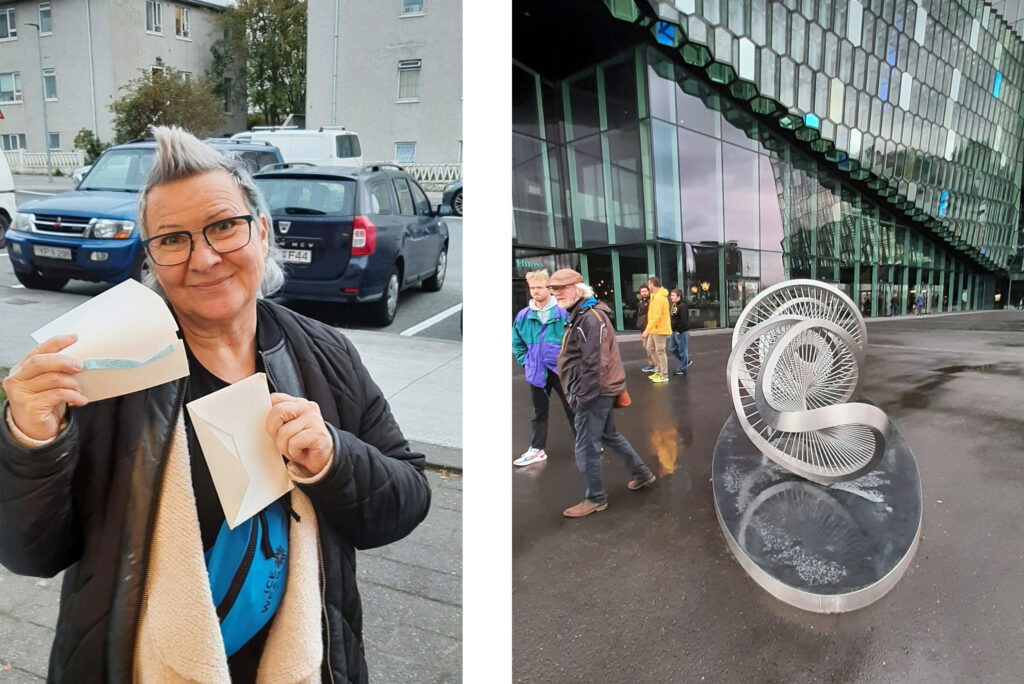
Reykjavik: Thora Karlsdóttir, M&Q @ Harpa (also see the 2017 blog)
During his stay at Grundarfjördur, Quirijn had made a video of Mariëlle felting by the side of a brook – which of course was very cold, so she brought her own hot water for the felting. I took pictures with my drone. The film “Felting on the Rocks” will be on show, together with the actual textile work in summer 2023 during the 7th RIGA International Textile and Fibre Triennial, Latvia.
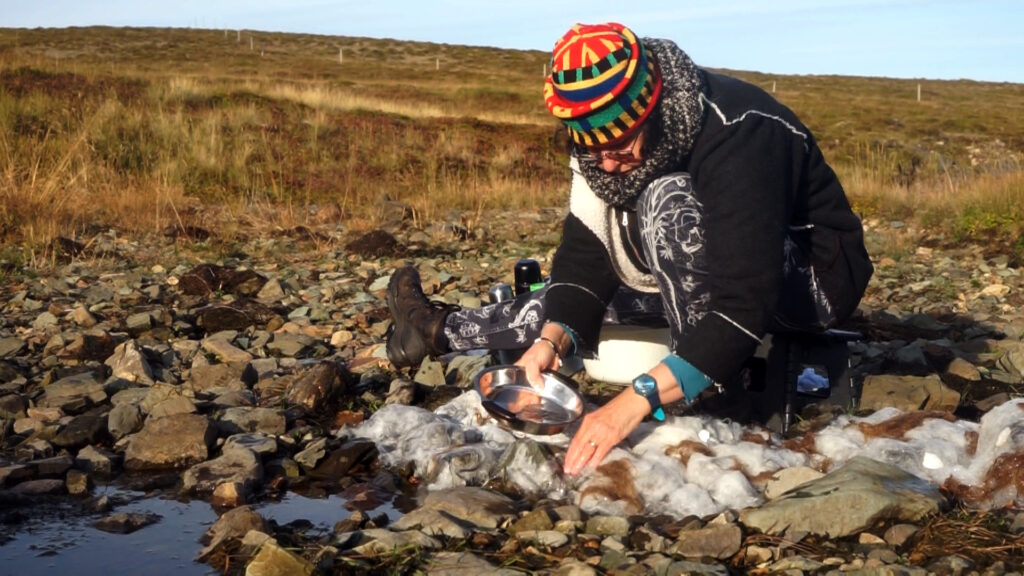
Mariëlle felting ( a still from Felting on the Rocks)
At the end of our residency, we had an exhibition at ARTAK 105 gallery, a small but sympathetic venue close to the Reykjavik Academy. We were to be present during the opening hours for a few days – no problem, because a lot of friends stopped by, as did quite a few passers-by. Modern visual art seems to be a lot closer to the general public in Iceland than it is in most other Western countries. Or is it that they are less jaded and more curious?
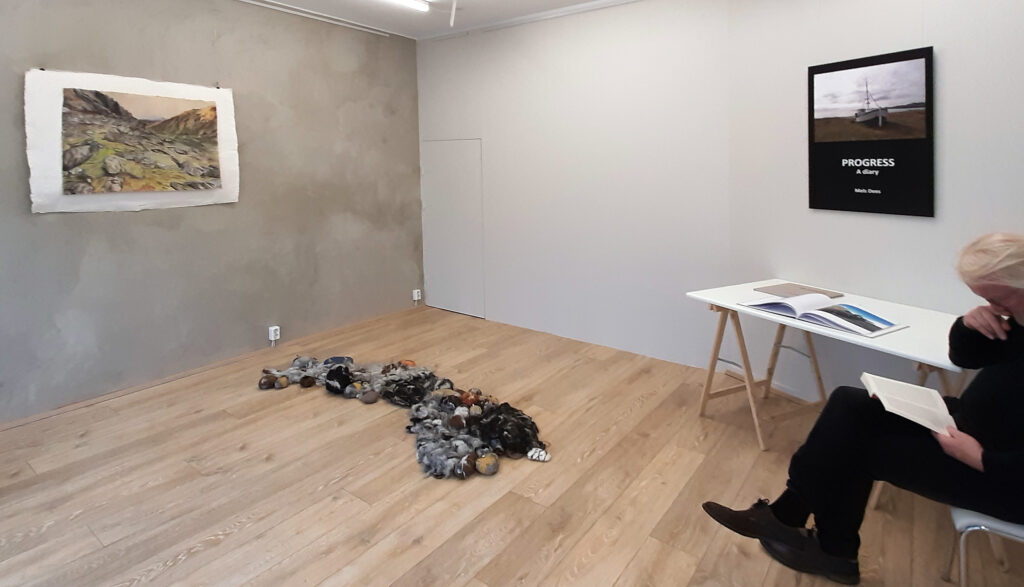
Exhibition at ARTAK 105, Reyjavik
